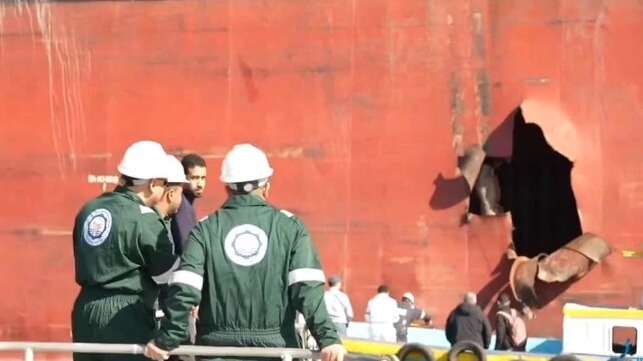Trade Lane Upheavals Divert More Container Cargo to U.S. West Coast

With the Panama Canal restricted by drought and the missile-prone Red Sea abandoned by ocean carriers, U.S. West Coast container ports are getting a back-to-the-future moment - back to the days when they had an ample share of the box shipments from Asia to the East Coast.
The Pamana Canal is currently allocating 24 slots per day for east-west transits, down by a third from the normal 36 slots. This has driven up the price and the waiting time for canal-bound shipping, and has discouraged shipowners from using the waterway.
In the meantime, Yemen's Houthi rebels continue to attack merchant ships in the Red Sea with missiles, armed UAVs and suicide drone boats. The risk is high enough that virtually all container carriers have quit the waterway. (Even CMA CGM, which had been a final holdout among the top-10 operators, is said to have called off using the Red Sea/Suez route after a recent near-miss.)
Asia-U.S. East Coast services that skip the Red Sea must go around the Cape of Good Hope instead, adding thousands of nautical miles to the voyage. For container ships, this equates to an additional 10-14 days of sailing time, plus an extra bunkering stop for smaller vessels.
Luckily for U.S. East Coast retailers and consumers, there is another way to get goods to market: the vast, unencumbered Pacific Ocean. Given the disruption for all-water routes to the Atlantic and Gulf coasts, ″[retailers] have decided to bring cargo into the West Coast ports and then use intermodal rail to get the cargo back to the East Coast,” National Retail Federation VP Jonathan Gold said in congressional testimony last week.
The rising demand for this trade lane is large enough that the Department of Transportation is keeping an eye on possible congestion. Little has been reported yet, but Gold says that his members need to anticipate a surge of traffic in four to six weeks.
Congestion and tight capacity are worth their weight in gold for ocean carriers, and freight prices have been rising rapidly. According to Gold, retailers have reported freight price quote hikes of up to 75 percent in recent weeks. Carriers suggest that the price adjustments are linked to higher operating costs (extra sailing days, extra fuel, bringing more ships into rotation) - but investors have been signaling otherwise. The markets have been bidding up the share price of the top boxship operators by double digits, demonstrating an expectation that the extra revenue will outpace the extra cost.
